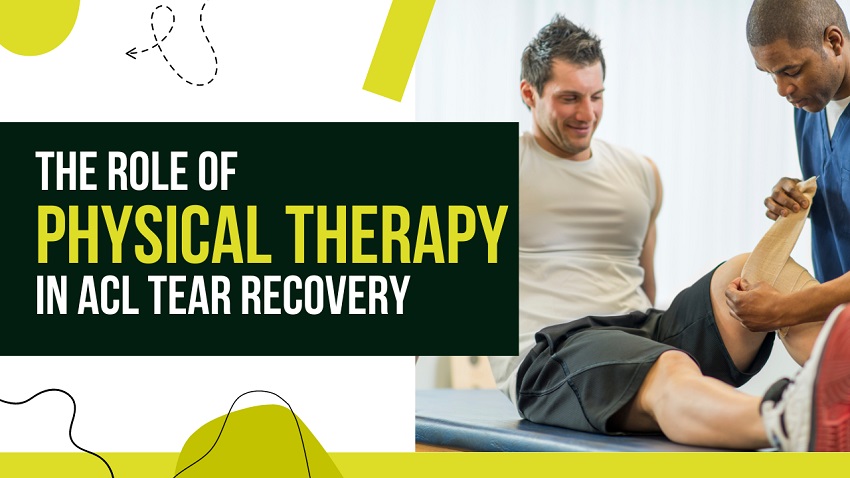Introduction
The Anterior Cruciate Ligament (ACL) is one of the major ligaments in the knee, ACL playing a crucial role in stabilizing the joint. An ACL tear is a common injury, particularly among athletes, and it can significantly impact one's ability to perform daily activities. Physical therapy is a vital component of the recovery process, helping individuals regain strength, flexibility, and function. This article explores the role of physical therapy in ACL tear recovery, covering various stages from pre-surgery to advanced rehabilitation.
Understanding ACL Tear and Recovery Needs
An ACL tear occurs when the ligament is stretched beyond its capacity, often due to sudden stops, changes in direction, or direct collisions. Symptoms include pain, swelling, and instability in the knee. Recovery from an ACL tear requires a comprehensive approach, including medical evaluation, surgical intervention if necessary, and a structured rehabilitation program. Understanding the specific needs of ACL recovery helps in planning an effective treatment strategy.
Pre-Surgery Physical Therapy (Prehabilitation)
Prehabilitation refers to the physical therapy exercises and activities performed before ACL surgery. The goal is to prepare the knee for surgery by reducing swelling, improving range of motion, and strengthening the muscles around the knee. Prehabilitation can lead to better surgical outcomes and a faster recovery. Key exercises include quadriceps sets, straight leg raises, and gentle range-of-motion exercises.
Post-Surgery Physical Therapy
Post-surgery physical therapy begins immediately after the ACL reconstruction surgery. The initial focus is on managing pain and swelling, restoring range of motion, and preventing muscle atrophy. Gradually, the therapy progresses to include weight-bearing exercises, balance training, and strengthening exercises.
Intermediate Phase of Rehabilitation
The intermediate phase of rehabilitation typically starts around 6-12 weeks post-surgery. During this phase, the focus shifts to more intensive strengthening exercises, proprioception training, and functional activities. The goal is to restore normal movement patterns, improve knee stability, and build endurance. Exercises may include leg presses, step-ups, and balance drills.
Advanced Rehabilitation and Return to Activity
Advanced rehabilitation prepares the individual for a return to sports or other high-level activities. This phase includes sport-specific drills, agility training, and plyometric exercises. The emphasis is on achieving full strength, flexibility, and confidence in the knee. A gradual return to activity is crucial to prevent re-injury. Functional testing and assessments help determine readiness for return to sports.
ACL tear treatment
ACL tear treatment involves a combination of medical, surgical, and rehabilitative approaches. Non-surgical options may include bracing, physical therapy, and activity modification. However, for active individuals or those with significant instability, ACL reconstruction surgery is often recommended. Post-surgery rehabilitation is critical for successful recovery and return to pre-injury levels of activity.
ACL injury treatment
ACL injury treatment varies based on the severity of the tear and the individual's activity level. Initial treatment focuses on reducing pain and swelling through rest, ice, compression, and elevation (RICE). Physical therapy plays a central role in both non-surgical and post-surgical treatment plans. The ultimate goal is to restore knee function and prevent future injuries.
Physical therapy exercises
Physical therapy exercises are essential for ACL tear recovery. These exercises are designed to improve strength, flexibility, and stability in the knee. Key exercises include:
- Quadriceps Sets: Tightening the quadriceps muscles to improve strength.
- Straight Leg Raises: Lifting the leg while keeping it straight to strengthen the quadriceps.
- Heel Slides: Sliding the heel towards the buttocks to improve range of motion.
- Bridges: Lifting the hips off the ground to strengthen the glutes and hamstrings.
- Balance Exercises: Standing on one leg to improve proprioception and stability.
- Step-Ups: Stepping onto a platform to enhance strength and coordination.
Consistency and proper technique are crucial for the effectiveness of these exercises. A orthopedic surgeon can provide guidance and adjust the exercises based on individual progress.
Conclusion
Physical therapy is a cornerstone of ACL tear recovery, providing the necessary support and guidance through each stage of rehabilitation. From pre-surgery preparation to advanced rehabilitation, physical therapy helps individuals regain strength, flexibility, and confidence in their knee. By following a structured rehabilitation program and working closely with a physical therapist, individuals can achieve a successful recovery and return to their desired level of activity.

